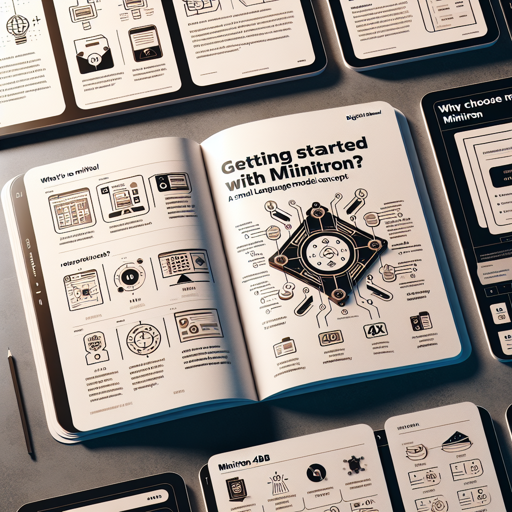In the ever-evolving landscape of artificial intelligence, small language models like Minitron are making headlines for their exceptional efficiency and effectiveness. This guide will not only help you understand and implement the Minitron 4B model but will also provide you with troubleshooting tips to ensure a smooth experience.
What is Minitron?
Minitron is a family of small language models (SLMs) derived from pruning NVIDIA’s 15B Nemotron-4 model. By carefully reducing the model’s embedding size, attention heads, and MLP intermediate dimensions, Minitron models retain the performance of larger models while being more resource-efficient.
Why Choose Minitron 4B?
- **Cost-Effective**: Requires up to 40x fewer training tokens compared to training models from scratch.
- **Improved Performance**: Minitron models exhibit up to a 16% improvement in MMLU scores.
- **Comparative Excellence**: Performs comparably to popular models like Mistral 7B and Gemma 7B, while outshining state-of-the-art compression techniques.
Getting Started with Minitron 4B
Installation Steps
Follow these steps to set up the Minitron 4B model in your environment:
git clone git@github.com:suiyoubi/transformers.git
cd transformers
git checkout 63d9cb0
pip install .Loading the Minitron-4B Model
Once you have Minitron installed, you can load the model for text generation using the following Python code:
import torch
from transformers import AutoTokenizer, AutoModelForCausalLM
# Load the tokenizer and model
model_path = 'nvidia/Minitron-4B-Base'
tokenizer = AutoTokenizer.from_pretrained(model_path)
device = 'cuda'
dtype = torch.bfloat16
model = AutoModelForCausalLM.from_pretrained(model_path, torch_dtype=dtype, device_map=device)
# Prepare the input text
prompt = 'Complete the paragraph: our solar system is'
inputs = tokenizer.encode(prompt, return_tensors='pt').to(model.device)
# Generate the output
outputs = model.generate(inputs, max_length=20)
# Decode and print the output
output_text = tokenizer.decode(outputs[0])
print(output_text)Understanding the Code: An Analogy
Think of the Minitron 4B model as a highly skilled chef in a restaurant. The chef (model) takes raw ingredients (input text) and turns them into a delicious dish (output text). Just like the chef specializes in specific cuisines, Minitron uses a defined process to understand and generate text. The tokenizer is like a sous-chef, chopping up the ingredients so that the chef can work more efficiently. By providing a recipe (model path and prompt) to the chef and sous-chef, you get a beautifully crafted dish that was prepared with minimal waste and maximum flavor.
License Information
The Minitron models are released under the NVIDIA Open Model License Agreement.
Evaluation Results
Minitron 4B has shown promising results in various evaluations:
- **5-shot performance**: Achieved an average MMLU score of 58.6.
- **Zero-shot performance**: Demonstrated remarkable ability with datasets like HellaSwag (75.0) and Winogrande (74.0).
- **Code generation performance**: Scored p@1 of 23.3 in the HumanEval dataset.
For a complete set of results, please refer to our arXiv paper.
Troubleshooting Common Issues
If you encounter any issues while working with the Minitron 4B model, here are some troubleshooting tips:
- Installation Problems: Ensure that you have the latest version of Python and the necessary libraries installed. If there are errors in the installation process, double-check the command syntax.
- Model Loading Errors: Verify that the model path is correct. If you get a “model not found” error, check if the model has been properly downloaded or if the internet connection is stable.
- Output Issues: If the generated output does not make sense, try adjusting the prompt or the maximum length parameter.
For more insights, updates, or to collaborate on AI development projects, stay connected with fxis.ai.
Final Thoughts
At fxis.ai, we believe that such advancements are crucial for the future of AI, as they enable more comprehensive and effective solutions. Our team is continually exploring new methodologies to push the envelope in artificial intelligence, ensuring that our clients benefit from the latest technological innovations.

